Dr. Martha Salazar-Zamora: The Enterprise Super
Dr. Martha Salazar-Zamora is leading her district to new heights with against-all- odds tenacity and an enterprising spirit.
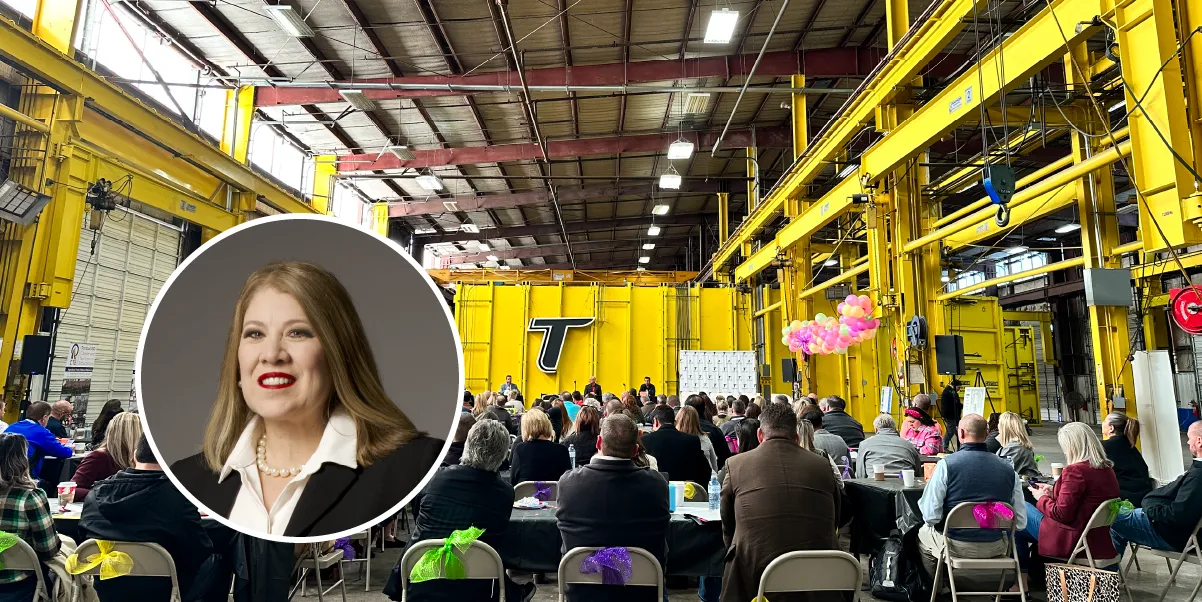
DR. MARTHA
SALAZAR-ZAMORA
THE ENTERPRISE SUPER
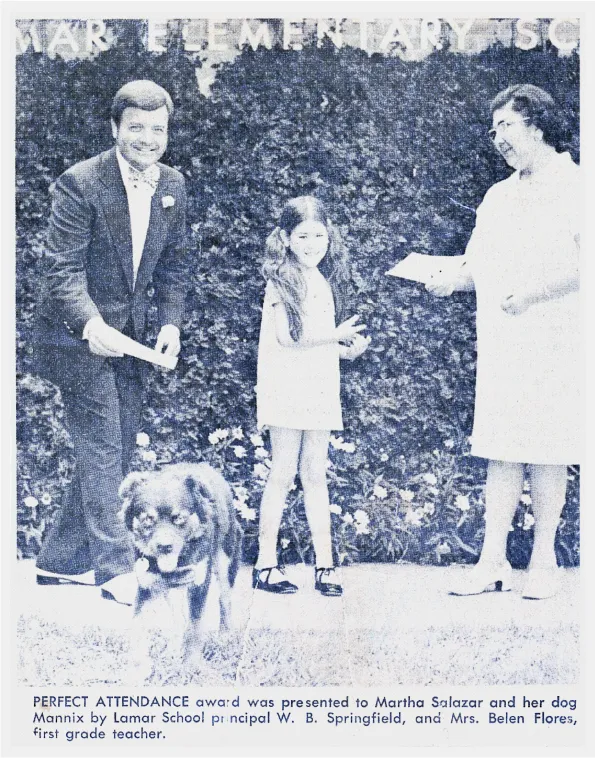
When Dr. Martha Salazar-Zamora describes herself as a lifelong learner, she means it. In first grade, she was on the cover of her hometown newspaper for having perfect attendance in school. But she wasn’t alone. Her dog Mannix stood by her side—along with her teacher, who always let her bring her best friend to class. “He went to school with me every day,” she tells us. “And we sat right up front."
For Salazar-Zamora, now in her 38th year in education, serving as a superintendent means being both highly personal and powerfully strategic. “Regardless of whether this is your fifth year or your 15th, we have to be bold leaders,” she tells SchoolCEO. “We have to make bold decisions because our students need and deserve it.”
Salazar-Zamora knows all about being bold, too—and being resilient enough to make a lasting impact on the lives of others. “I’m very fortunate to do what I love,” she explains. “But I never expected to be in this seat. I am from a very poor community in south Texas, and I was born with profound hearing loss.” It was Salazar-Zamora’s experience as a young learner that made her the against-all-odds leader she is today.
Salazar-Zamora is currently leading Tomball ISD, about 35 miles north of Houston. The suburban district not only increased its enrollment during the pandemic, but has also continued to exponentially grow the number of students it serves. “We are putting the ‘fast’ in fast growth,” she explains. When she started at Tomball 10 years ago, the district had just under 10,000 students; today, it has over 22,000.
Despite this overwhelming momentum and an influx of students from all over the world, Tomball has maintained its success as one of the highest-achieving districts in Texas. “We’ve continued a straight-A academic record by keeping high standards and continuing to push the envelope in affording choices and opportunities for our students,” Salazar-Zamora says. The superintendent has also kept a sharp focus on ensuring the district stays as tightknit as possible, even as it grows. “We want you to come here, experience the excellence that we provide in all areas of our community, and see that no matter how large we get, it still feels like home,” she says.
Salazar-Zamora’s leadership extends far beyond the borders of Tomball ISD. She is also the current president of the Texas Association of School Administrators (TASA) and the Fast Growth School Coalition, as well as the president-elect of the Council of Women School Executives. In 2023, TASA named her Texas Superintendent of the Year, and she was subsequently selected by AASA as a top-four finalist for the national honor. “It takes a special person to take care of hearts and take care of business,” Salazar-Zamora tells us. “And I want to be that person.”
Daring to Dream
As a child, Salazar-Zamora was enrolled in both special education—due to her hearing loss—and gifted and talented classes. This gave her an up-close look at how schools serve different kinds of students and the vital role parents play in their children’s education. “My mother was my first advocate,” she says. “She taught me to live by a mantra that I’ve shared with many, many parents: Never, ever let any disability be an inability. Both of my parents taught me that I could do anything anyone else could do. My drive, passion, and the belief that all means all comes from that experience.”
Salazar-Zamora was so impacted by her experience as a student that she initially began her career as a speech-language pathologist. First, she worked in a clinical setting, but as soon as she began working with students in Texas’ Alice ISD, she realized her true destiny. “I fell in love with public education,” she tells us. “And I quickly realized that as much as I loved speech therapy, I was an educator through and through.”
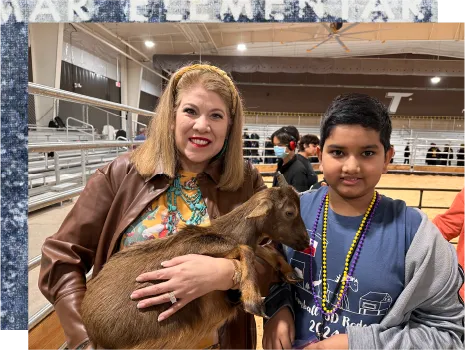
She would go on to hold several leadership roles in other Texas districts, from director of special education to assistant superintendent of curriculum and instruction. “These were not jobs I necessarily applied for,” she explains, “but oftentimes because I was tenacious, people saw something in me. What I didn’t realize at the time was that each one of these roles was preparing me for the superintendency.” Salazar-Zamora eventually found her way back to her home district, Kingsville ISD, where she became the first female superintendent in its history. Her three years there were followed by leadership opportunities in larger districts like Houston ISD and Round Rock ISD before making history again as the first woman to lead Tomball ISD.
No matter the roles she’s held, Salazar-Zamora has remained grounded in the belief that with support from their schools and families, any child can beat the odds—just like she did. “I still love to talk to parents, especially those whose children are living with disabilities,” she says. “A parent needs to know that their child can grow up to be whatever their destiny is. All of our kids need to be afforded the opportunity to dream bigger, so parents should work as partners with the public school system to ensure that their child achieves greatness.”
Leaving a Legacy
When we spoke to Salazar-Zamora, she was approaching her seventh anniversary as Tomball ISD’s superintendent—a role she has redefined by being a bold and strategic leader. Of the many things she’s accomplished at the district’s helm, Salazar-Zamora says she’s most proud of the Tomball Innovation Center. This multidisciplinary campus has given the students of Tomball the opportunity to explore a vast array of careers and hone their skills through interactive, on-the-job experiences.
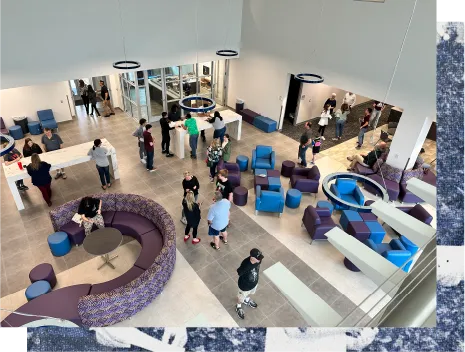
But before the Innovation Center became the multipathway powerhouse it is today, it was just an idea—one that went through many highs and lows before it came to fruition. “This idea actually started off as a partnership with BJ Services, a very large oil and gas company right here in Tomball,” Salazar-Zamora explains. “We were planning to build an academy of energy and international business—first in the state and second in the nation—so that our students would receive their entire high school experience in industry.”
The district had even hired administrators, interviewed staff, and selected students for the academy. But then COVID struck, and like so many companies, BJ Services filed for bankruptcy a few months later. “It was very disheartening,” Salazar-Zamora says. But despite the bankruptcy’s effect throughout the community and the heartache it caused, the project wasn’t a total loss. “The dream didn’t actually die,” she says. “It just had to be repurposed.”
That dream began to take its new form months later when Salazar-Zamora, driving by the shuttered headquarters of BJ Services, saw a large “For Sale” sign. Wasting no time, she consulted with the district’s CFO. They quickly realized that with the land under bankruptcy, they could purchase the entire property—70 acres with 10 buildings—at a substantial discount. “So what started as a wild dream has turned into an even wilder reality,” she says. In the end, the district was able to purchase the property, currently valued at close to $400 million, for only $39.5 million.
The options offered by the Tomball Innovation Center run the gamut. It houses the district’s new P-TECH program for medical services, as well as Tomball Star Academy—which blends high school with the first two years of college. “It gives our students the opportunity to graduate with a diploma in one hand and 60 college credits in the other,” Salazar-Zamora explains. “And this past year, 100% of those academy kiddos graduated with both degrees. We made it happen, and they made it happen. Team Tomball made it happen.”
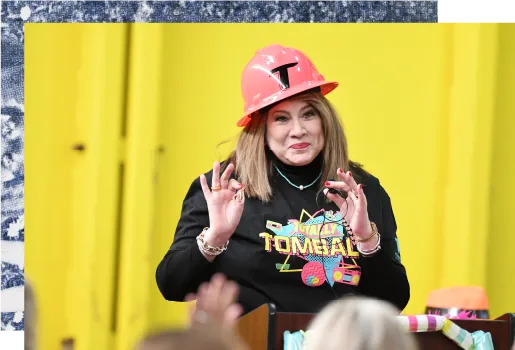
But, of course, that’s not all. The Tomball Innovation Center also hosts CTE programming covering everything from cybersecurity and law enforcement to drone certification and aviation. The innovation center also recently had a ribbon-cutting for their new Agricultural Science Center—which includes a livestock show barn that doubles as a robotics arena. “So when there’s not piggies there, there are robots,” Salazar-Zamora says. The dual-use show barn has begun drawing a lot of attention, too. “We already have 15 national robotics competitions slated for that space,” she adds.
“This is a legacy purchase,” says Salazar-Zamora. “I can’t believe how fortunate we are as a district to take something sad and turn it into an opportunity for all.”
The Enterprise Superintendent
In addition to housing the innovation center, the former BJ Services complex has created a vast amount of other opportunities for the district. “These are not buildings in the sense of how we build public schools,” Salazar-Zamora explains. “Oil companies like their marble. Their leather is real leather. And when you buy something in bankruptcy, you get everything that was left behind.”
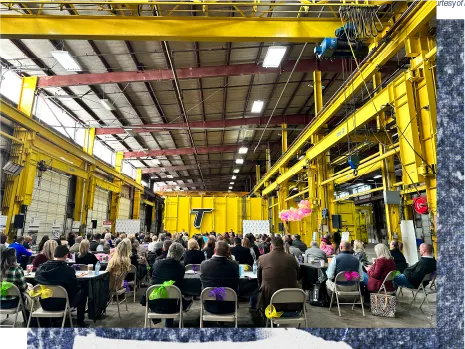
“We can rent out things like warehouse spaces, cranes, and other big products needed for oil and gas in the area,” Salazar-Zamora says. In fact, the district already leases one of their new buildings to local energy technology company Baker Hughes. “So now we are enterprising and generating new revenue for our schools,” she adds.
This innovative approach—finding new sources to supplement school funding—has become a hallmark of Salazar-Zamora’s leadership. “I say I’m an enterprise superintendent,” she explains. “Generally you don’t go into education thinking that business will be such a driving force in what you do, but as the CEO of a school district, you are running a very large business that often employs the largest number of people in a community. So I like to remind people to look within their communities at what opportunities there might be.”
The Innovation Center isn’t the only revenue stream Salazar-Zamora has found for her schools. “We are also now the proud owners of a wastewater treatment plant,” she says. It all happened because the district needed water treatment access in an underdeveloped part of the community—and, once again, Tomball would have to fork over much-needed funds to ensure their school community was being cared for. “But instead of paying for a service, we created our own,” Salazar-Zamora adds, “and now others are willing to pay us for our wastewater treatment. So we’re generating a substantial amount of money—and serving the community at the same time.”
Under Salazar-Zamora’s leadership, Tomball also recently used bond funds to build a new, state-of-the-art, 10,000-seat football stadium—something a lot of people in the community are thrilled about. “We’re in Texas, okay? So football and athletics are pretty big around here,” she says. What’s more, the stadium includes an event center that the district can utilize themselves—or rent out for weddings, parties, or community events. It’s just one more way the district is generating funds that can be put to good use for students.
Despite her against-all-odds approach to leadership, Salazar-Zamora is quick to acknowledge that these innovative enterprises wouldn’t have been possible without a lot of support. “I have the most amazing team here in Tomball, and I’m so fortunate to work with people who encourage us to do great things,” she says. “And in this day and age, it takes a supportive, amazing school board, too.”
The superintendent also wants to inspire other leaders to find ways to generate ongoing revenue for their schools. “I’m not saying that’s going to subsidize your entire budget,” she explains, “but it is extra support at a time when not a lot of our politicians are putting additional dollars into our schools—which is so, so necessary.”
Paving the Path
It would be impossible to look at Dr. Salazar-Zamora’s time in Tomball and her many years in education without acknowledging the impact she’s had on other leaders, especially women. “When I became a superintendent over 25 years ago, there were very few, if any, people who looked like me in this role,” she explains. “There were very few women and even fewer women of color. All these years later, there are more of us, but there are still not enough of us.”
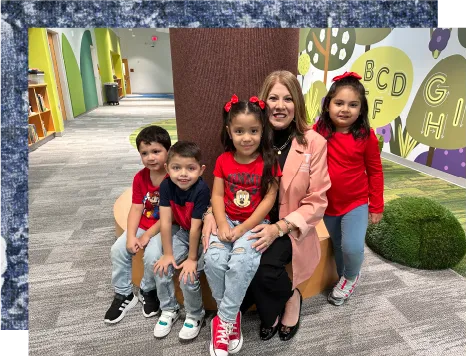
And even though she’s had a storied career of firsts as a Latina leader, Salazar-Zamora isn’t one to rest on her laurels. “I want to serve as a mentor for women of all ages—those who are just starting their careers and women who have done this for a long time,” she says. “I think my story resonates especially with women of color because they often don’t see themselves in a role like this.”
As a mentor, Salazar-Zamora is dedicated to helping women in leadership like herself find their own voices in public education. In fact, her assistant often tells her that she can’t mentor the entire world. “But we’ve all heard that phrase, To whom much is given, much is expected, right?” she asks. “I believe I’ve had a very fortunate career, so I want to help others on their journeys in education leadership or even outside of education.”
For Salazar-Zamora, helping young leaders sometimes takes the form of sitting in on a dissertation and giving feedback. But in a more personal sense, she is known to hand out her phone number to any young woman who needs inspiration or guidance. “Sometimes they just need encouragement, but it’s important to do anything I can to help them,” she says. “It took 100 years for TASA to have a Latina president, and I vow not to be the last.”
As the mother of two young women and the grandmother of two more, Salazar-Zamora speaks passionately about making sure they know their value. “Young women of color are often disregarded, pushed aside, or not taken seriously,” she says. “They are not fully seen for their strength, for their ability, or for what they can offer. I want to see them, and I want them to see themselves. And if seeing me allows them to see themselves, then I’ve done something right.”
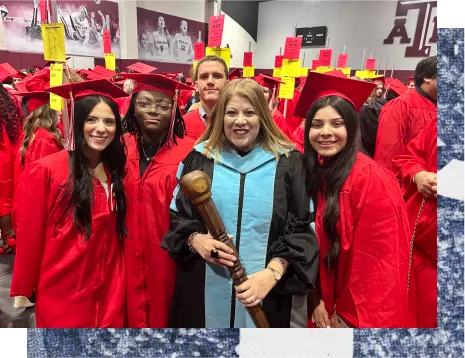
After nearly four decades in public education, Salazar-Zamora is showing no signs of stopping, and her district and state are all the better for it. “At a time when it is not easy to serve in education—much less public education—I still believe I have the best job in the entire world,” she tells us. “And I’m certainly at retirement age, but I cannot even fathom walking away from a job I love so much. So until that day comes—and it won’t be anytime soon—I’m going to continue doing what I think is important for the students of Tomball ISD and for students everywhere.”

